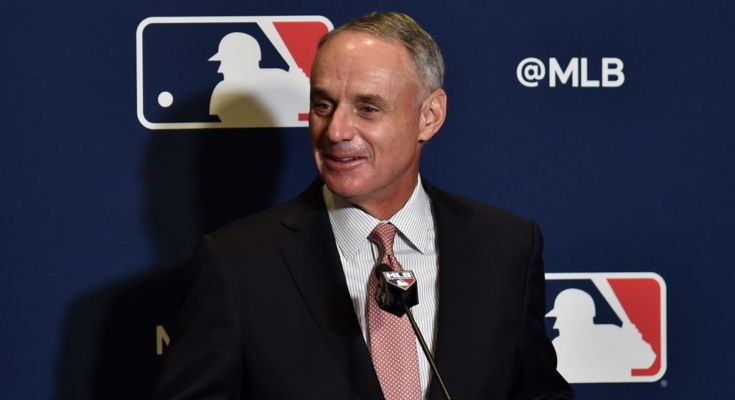In August, Major League Baseball made its first core economics proposal to the MLB Players Association. That would’ve involved a radical restructuring of the game’s economic system, first granting players free agency at age 29 1/2 (as opposed to after six years of MLB service) and replacing the current arbitration structure with a pool-based system attached to revenues.
This week, the league proposed an unexpected wrinkle in CBA talks. While the new proposal contains the same age threshold for free agency qualification, Evan Drellich, Ken Rosenthal and Eno Sarris of the Athletic report that this offer would tie pre-free agency pay directly to a player’s Wins Above Replacement tally. Under this structure, a player’s service time and career WAR marks (weighted to emphasize the most recent seasons more heavily) would set the player’s salary. While multiple websites calculate WAR totals in different ways, MLB’s proposal would base salaries on FanGraphs’ WAR tabulations.
Earlier this afternoon, Ben Nicholson-Smith of Sportsnet reported (on Twitter) that MLB had offered to replace the arbitration system with salaries based on an algorithm. Nicholson-Smith added that the MLBPA was not enamored with that idea, and the Athletic trio quotes one player representative as saying that such an offer has “zero chance” of being approved.
That’s not at all surprising. MLB’s proposal to set free agency at 29 1/2 years has always looked to be a non-starter for the players. The league’s top prospects typically reach the majors in their early-mid 20’s. Those who live up to their promise will often pass six years of service and hit free agency in advance of their age-28 or age-29 seasons. Marketing as many prime-aged seasons as possible is what often allows players to land contracts that push free agency forward, and the league’s proposal could tether that elite group to their original teams for longer than the current system does. (For example, neither of this offseason’s top two free agents — Carlos Correa and Corey Seager — would be eligible for free agency were the age set at 29 1/2).
Certainly, the age threshold would impact some players positively as well. Players like Aaron Judge and Willson Contreras would’ve reached free agency this winter as opposed to going into their final year of arbitration. A late bloomer like Cubs third baseman Patrick Wisdom would’ve been on the open market instead of making the league minimum salary, and he’d have likely made a few million dollars in 2022 coming off a 28-homer showing over just 375 plate appearances. Overall, though, the union likely sees the 29 1/2 year age threshold as too old to be more desirable than the current service structure.
Fixing player salaries to a statistical formula comes with its own challenges. Past performance will, of course, always be relevant to player pay. The existing arbitration system awards players salaries based on their combination of service time and prior salaries of statistically-comparable players. There’s a case to be made that MLB’s proposal would modernize that process.
Arbitration can lean a little more heavily than most modern teams do on traditional box score statistics like pitcher wins, saves, and hitters’ home runs and RBI totals. While arbitrators will also consider newer, WAR-like metrics, their comparative reliance on old-school stats has led to arb salaries for closers and defensively-limited sluggers tending to skew higher than teams have been willing to pay. On the other hand, arbitrators haven’t generally placed as much value as clubs have on glove-first players and high-leverage setup relievers. Basing pre-free agency salaries off WAR would probably help to close that gap.
That said, the MLBPA seems likely to take issue with tying salaries to WAR directly. As the Athletic scribes write, using that metric is particularly challenging with regards to relievers. Both the free agent and arbitration markets have valued bullpen arms more highly than WAR totals typically do. Advanced defensive metrics — a key component in WAR calculations — can be unstable on a yearly basis. Over the long run, those metrics tend to align with general evaluations of a player’s defensive acumen. Fixing salaries weighted heavily on single-season defensive metrics, though, seems suboptimal.
WAR naturally involves making imprecise adjustments for different parks, which could pose problems when teams adjust playing field dimensions. And WAR metrics differ on how to separate a pitcher’s contributions from those of his defense; FanGraphs, upon which MLB’s proposal would be based, evaluates pitchers essentially off their strikeout, walk and home run rates. That strips out ball in play luck but also creates some seemingly odd results. For instance, Aaron Nola — who threw 180 2/3 innings of 4.63 ERA/3.37 FIP ball — had a higher 2021 fWAR than Robbie Ray, who tossed 193 1/3 frames of 2.84 ERA/3.69 FIP pitching.
None of this is meant as an indictment of WAR models generally or of FanGraphs’ choices specifically. Most or all MLB teams rely on similar calculations in making player evaluations. That’s with good reason, since advanced metrics of that nature can offer insights into players not found by typical box score stats. Still, these limitations highlight the potential pitfalls of tying player salaries directly to this one statistic.
MLB’s proposal looks unlikely to make much headway ultimately, and both sides will continue negotiations as we near the expiration of the current CBA on December 1. Nicholson-Smith reports that the two sides are scheduled to meet next on Monday.


